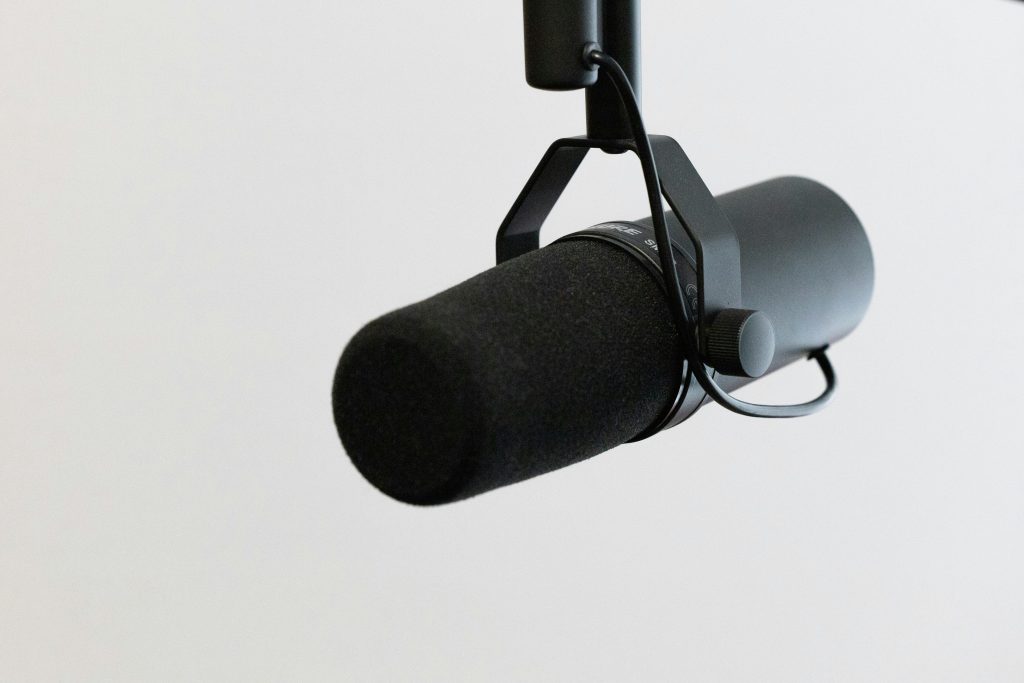When most people think of video production, their minds jump straight to the visuals. The quality of the camera, the lighting setup, or the creative composition of each frame is undeniably important, but, there’s something even more essential to holding an audience’s attention: sound.
Poor audio is one of the fastest ways to lose viewers, no matter how cinematic your footage looks. In fact, audiences are far more forgiving of imperfect visuals than of muffled dialogue or distracting background noise.
If you’re shooting in a city like Los Angeles, where the competition is fierce and production standards are high, your audio quality can make or break the success of your project. Whether you’re capturing a corporate interview in an office building, filming a commercial on a busy LA street, or producing a narrative short in the hills, the following audio recording tips for video shoots will help you elevate your sound to a professional level.
Why Audio Quality Matters in Video Production
In storytelling, audio isn’t just an add-on, it’s half the experience. Imagine watching a beautifully filmed interview where every sentence is buried under a constant hum, or a brand commercial where dialogue is drowned out by traffic noise. That disconnect instantly takes viewers out of the story.
Los Angeles is a city brimming with storytellers, and in such a competitive environment, clean sound separates amateur projects from professional productions. Production companies like BLARE Media know that prioritizing audio alongside visuals is essential for delivering polished, engaging content that resonates with audiences.
Essential Audio Equipment for Video Shoots
Getting professional sound starts with the right tools. While it may be tempting to rely on a camera’s built-in microphone, this approach often results in hollow, distant audio that feels unprofessional. Instead, filmmakers should build their toolkit around dedicated audio gear.
Beyond microphones, portable audio recorders give filmmakers far greater control and quality compared to recording straight to the camera. And to make sure nothing slips by unnoticed during a take, a good pair of closed-back monitoring headphones is indispensable. If you’d like to see how equipment choices fit into a broader pre-production strategy, check out our guide on how to work with video editors, because great audio always starts long before post-production.
Choosing the Right Microphone for the Shoot
Microphones are at the heart of any recording setup. No single microphone is perfect for every situation, which is why matching your mic choice to your environment and subject is so important.
Lavalier microphones
Lavalier microphones are excellent for controlled indoor setups, such as executive interviews or training videos, where a small and consistent audio source is needed. They can be clipped discreetly to clothing while capturing consistent, clear sound, and arent too big that they distract from the visuals.
Shotgun microphones
Shotgun microphones, on the other hand, shine in dynamic environments. If you’re filming on location in Los Angeles, where ambient sound is unavoidable, their ability to pick up directional sound while rejecting side noise can save a production. Shotgun microphones, with their highly directional pickup pattern, are ideal for outdoor or narrative shoots where isolating dialogue from background noise is crucial.
Handheld microphones
For live events or spontaneous interviews, handheld microphones are the most practical solution. They’re easy to pass between speakers and can withstand a variety of environments without sacrificing clarity.
Understanding when and why to use each type ensures that you don’t just capture sound, but capture the right sound for your story.
Location Sound Considerations
Los Angeles offers one of the most diverse filming backdrops in the world, from the heart of downtown to quiet residential neighborhoods, but each location presents its own audio challenges. Indoors, the biggest issue is often echo and reverb caused by empty or reflective spaces.
Setting up sound blankets, rugs, or even furniture can go a long way toward softening these reflections. Outdoors, the challenges multiply. Busy streets bring traffic, sirens, and construction noise, while coastal areas might surprise you with persistent wind.
Scouting your location in advance gives you a chance to listen for these issues before shoot day. If noise levels are unpredictable, always bring wind protection for your microphones and plan backup options. The ability to anticipate environmental obstacles is just as important as setting up your camera angles.
Tips for Capturing Clean Dialogue
Dialogue often carries the emotional and narrative weight of a video, which means clarity is non-negotiable.
- Position the microphone as close to the subject as possible (without it entering the frame makes) a dramatic difference in quality.
- Monitor the audio live through headphones helps you catch small issues in real time, whether it’s a faint buzz, fabric rustle from a lavalier, or unexpected interference.
- Run a test recording before the official take ensures you won’t be surprised later in editing.
- Consider recording a backup track. For example, you might pair a lavalier mic on the speaker with a shotgun mic capturing the same dialogue from overhead. This way, if one track fails, you’re covered.
Common Audio Recording Mistakes to Avoid
Even experienced filmmakers make mistakes when it comes to sound. One of the most common is relying solely on the camera’s built-in mic, which rarely delivers professional-quality audio. Another frequent oversight is failing to monitor sound during the shoot, which means you won’t catch issues until it’s too late to fix them.
Outdoor shoots in Los Angeles come with their own risks, including wind and environmental noise, but many crews forget to account for these factors. Even something as simple as a dying battery or a full memory card can derail your audio workflow if overlooked. By staying aware of these common pitfalls, you can save yourself countless headaches in post-production.
Best Practices for Outdoor Audio Recording
Shooting outdoors in Los Angeles can be both inspiring and unpredictable. Protecting your audio starts with preparing your equipment for the environment.
Using foam covers, windshields, or furry “dead cats” over microphones is one of the most effective ways to reduce wind interference. When ambient sounds like traffic or construction threaten to overwhelm your dialogue, plan to record in shorter bursts or during quieter windows of time.
Adjusting gain levels as the environment changes is another important skill. Outdoor settings rarely stay consistent, and having an operator actively managing sound levels ensures that unexpected changes don’t ruin a take.
Audio Recording Levels and Settings
Understanding technical audio settings is the difference between sound that’s usable and sound that’s frustrating in post-production.
Gain should be set carefully so that dialogue peaks between -12dB and -6dB, leaving enough headroom to avoid clipping while still capturing clear sound. Limiters and compressors can also help by catching sudden spikes in volume that might otherwise distort.
Consistency is key. Keeping your levels stable across takes makes the editing process smoother and helps create a natural, professional final mix.
Post-Production Audio Tips
No matter how careful you are on set, post-production usually involves some degree of audio cleanup. Software tools can remove background hums, balance dialogue levels, and reduce unwanted noise. Syncing external audio tracks with camera footage is another essential step, particularly when you’ve used an external recorder. Once synced, you can mix dialogue, sound effects, and music into a cohesive audio landscape.
This process ties into broader workflows, like repurposing video content, where having high-quality source audio makes your video easier to reuse across platforms.
Advanced Audio Techniques for Filmmakers
For larger productions in Los Angeles, advanced audio techniques take quality even further. Dual-system recording, where audio is captured on both the camera and a dedicated recorder, provides flexibility and backup. Multi-mic setups allow you to capture dialogue from multiple speakers at once without sacrificing clarity. And for projects with complex timelines, timecode synchronization ensures that audio and video stay perfectly aligned across different devices.
These professional workflows may seem technical, but they are crucial in keeping productions smooth and efficient, particularly when deadlines are tight.
How BLARE Media Can Help with Professional Audio Recording
At BLARE Media, we know that professional sound is essential to every successful video. Our Los Angeles production team brings not only the equipment but also the experience to ensure clean, consistent audio every time. From capturing crisp dialogue on set to mixing and polishing in post-production, our process is designed to deliver audio that enhances your visuals and strengthens your message.
If you’re preparing for a video shoot in LA and want results that sound as good as they look, explore our Los Angeles video production services and let’s create something remarkable together.
Conclusion
Video production is a blend of sight and sound, and ignoring either one is a mistake. By paying attention to microphone choice, monitoring, recording levels, and location challenges, you can dramatically improve the quality of your projects. These audio recording tips for video shoots in Los Angeles will help you capture the clarity your audience deserves and give your work the professional polish it needs to stand out.
When you’re ready to take your production to the next level, remember: at BLARE Media, we make sure your video not only looks cinematic but sounds exceptional.


